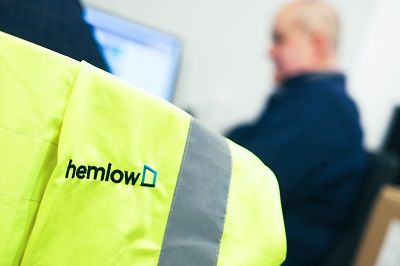Transforming Buildings with IoT Sensors and CAFM Systems: Unlocking Intelligent Efficiency
Whether you are a facilities manager or a property owner, understanding the potential of combining IoT sensors and CAFM systems can help you optimise building operations and achieve greater operational excellence.
We’ll explain what IoT sensors and CAFM systems are and then explore how both can work together to provide powerful benefits for monitoring and streamlining your processes.

Overview of IoT (Internet of Things) for Property Management
The Internet of Things (IoT) refers to the interconnected network of devices and sensors that communicate and exchange data over the internet. These devices can range from everyday household items like smart thermostats and refrigerators to complex industrial machinery and building management systems.
Within the property management industry, IoT sensors, in particular, play a crucial role in this network by collecting real-time data on various parameters such as temperature, humidity, occupancy, energy consumption, and more.
Combined with the right Computer-Aided Facility Management (CAFM) system, this data can then be effectively used to monitor, control, and optimise the performance of different systems and processes within a building.
CAFM Systems Overview
A CAFM system is a powerful software tool that helps facility managers oversee and manage building operations effectively. CAFM solutions integrate various risk assessment functionalities, including maintenance management, space planning, asset tracking, and energy management.
By providing a centralised platform for monitoring and controlling building operations, CAFM systems enhance the efficiency and effectiveness of facilities maintenance tasks.
Bear in mind that not all CAFM software systems are equal and it’s therefore crucial to invest in the right one for the properties you manage.
The Benefits of Combining IoT Sensors and CAFM Systems
When IoT sensors are paired with an effective CAFM system, the combination can transform a building with older assets into an intelligent building. This integration leverages the real-time data collected by IoT sensors and uses the analytical and asset management software capabilities of a CAFM system to optimise building performance. Here are some of the key benefits of this powerful synergy:
Improved Efficiency
One of the most significant advantages of integrating IoT sensors with a CAFM system is the improvement in operational efficiency. IoT sensors provide accurate and real-time data on various building parameters, reducing the reliance on manual data collection and minimising errors.
For example, sensors can detect when a room is unoccupied and automatically adjust lighting and HVAC settings (Heating, Ventilation and Air Conditioning), ensuring energy is not wasted. This automation not only reduces operational costs but also ensures that facilities management tasks are performed more efficiently and accurately.
Sustainability
Sustainability is a critical concern for modern buildings, and IoT sensors paired with a CAFM system can significantly contribute to sustainable building operations.
By continuously monitoring energy consumption and environmental conditions, these systems can identify areas where energy is being wasted and suggest corrective actions. For instance, sensors can detect inefficient HVAC performance or identify equipment that is consuming excessive power. Facility managers can then use this information to make data-driven decisions to improve energy efficiency, reduce carbon footprints, and achieve sustainability goals.
Safety
Safety is another crucial aspect of building asset management that can be enhanced through the integration of IoT sensors and a CAFM system. IoT sensors can detect potential hazards such as gas leaks, water leaks, or equipment malfunctions in real time.
When these sensors are connected to a CAFM system, alerts and notifications can be sent immediately to facility managers, enabling prompt action to mitigate risks and prevent accidents. This proactive approach to safety ensures a safer environment for building occupants and helps avoid costly damage to property and equipment.
Improved Decision-Making
The combination of IoT sensors and a CAFM system provides facility managers with a wealth of data that can be used to make informed decisions. By analysing real-time data on building performance, occupancy patterns, and environmental conditions, managers can identify trends and gain insights into how the building is being used.
This information can be used to optimise space utilisation, schedule maintenance activities more effectively, and plan for future upgrades or renovations. Improved decision-making based on accurate data leads to better resource allocation and more strategic facilities management.
Minimise Costs
Reducing operational costs is a primary goal for facility managers, and the integration of IoT sensors with a CAFM system can help achieve this objective.
By optimising energy consumption, reducing maintenance costs through predictive maintenance, and enhancing overall operational efficiency, these systems can significantly lower the total cost of ownership for a building.
For example, sensors can predict when equipment is likely to fail and trigger maintenance before a costly breakdown occurs. Additionally, by identifying and addressing inefficiencies, facility managers can reduce utility bills and extend the lifespan of building assets.

How Hemlow’s CAFM System does all of this and MORE…
Our CAFM system distinguishes itself in the market with its advanced features and seamless integration with IoT sensors. This combination enhances building asset management and operational efficiency.
Key features include:
Asset-Level Data with IoT Integration
Hemlow’s CAFM system integrates IoT sensors with individual assets, providing detailed real-time data on temperature, vibration, energy consumption, and more.
This asset-level data allows facility managers to monitor each asset’s health and efficiency, enabling proactive maintenance and early issue detection, which reduces downtime and maintenance costs.
Historical Issues and Data Analysis
Our CAFM system provides access to a comprehensive history of issues and maintenance activities for each asset. This historical data helps identify recurring problems, understand performance trends, and make informed maintenance decisions.
Analysing past issues supports preventative measures, extends asset lifespan, and ensures compliance with industry standards.
Capex Lifecycle Planning
Effective Capex planning is crucial for long-term facility sustainability. Hemlow’s CAFM system aids Capex lifecycle planning by offering insights into asset condition and performance.
Understanding historical and current asset data helps facility managers make informed decisions about replacements, upgrades, and investments, optimising capital planning and budgeting. Our CAFM system can track the lifecycle of each asset and notify you at incremental stages so you can plan in advance and budget for replacements.
According to BSRIA, understanding building asset lifecycles and performance is vital for effective facilities management. Hemlow’s CAFM system aligns with BSRIA’s recommendations, offering robust data analysis and asset management capabilities to achieve operational excellence and sustainability.
Summary of Hemlow’s CAFM System Key Features and Processes
- Planned Preventive Maintenance Planner: Once the maintenance schedule is loaded, the CAFM system provides a year-long preventive maintenance planner.
- Live Maintenance Planner: Accessible through the client portal, it uses colour codes (green for successfully tested assets, red for failed tests requiring remedial work, and blue for future planned maintenance) to represent asset statuses.
- Automated Monthly Reports: Clients receive monthly email reports detailing upcoming subcontract, technical, and overtime work.
Quality Control of Delivery:
- Compliance Planner: Current compliance dates are documented and imported into the CAFM system according to SFG20 specifications.
- SFG20 Task Codes: Assets are assigned SFG20 task codes to specify required work. Engineers access SFG20 service sheets on-site for reference.
- Job Sheet Records: Completed maintenance tasks are recorded in job sheets, indicating if assets pass or fail. Failed assets trigger a remedial work plan from the Contract Manager.
RAMS (Risk Assessment and Method Statements):
- Risk Assessments: Site-specific risk assessments are available via the client portal and reviewed annually. Dynamic risk assessment methodology is used for updates.
- Hazard Evaluation: Hazards are ranked based on likelihood and severity, generating a RAG (Red, Amber, Green) risk rating.
- Subcontractor Assessments: Site-specific risk assessments are required from subcontractors before work begins, shared with the client to generate work permits.
- Method Statements: Detailed method statements are included in the maintenance document, reviewed and tailored annually by the Contract Manager. Engineers access these via their mobile devices through the CAFM system, covering work steps, safety practices, required tools, and more.
Comprehensive Risk Management:
- The process ensures a clear risk register for all site work, encompassing health and safety practices, PPE requirements, COSHH information, site emergency procedures, and tool lists for task completion.

FAQs about IoT Sensors and CAFM Systems
1. What are IoT sensors and how do they work in a building management context?
IoT sensors are devices that collect real-time data on various parameters, such as temperature, humidity, occupancy, and energy consumption.
In a building asset management context, these sensors communicate this data over the internet to a central system, where it can be analysed and used to optimise building operations. For example, occupancy sensors can adjust lighting and HVAC settings based on room usage, improving energy efficiency and comfort.
2. What is a CAFM system and what functionalities does it offer?
A CAFM system (Computer Aided Facilities Management) is a software platform that helps facility managers oversee and manage building operations. Key functionalities of a CAFM system include maintenance management, space planning, asset tracking, and energy management.
By providing a centralised platform for monitoring and controlling building operations, CAFM systems enhance efficiency and effectiveness in facility management.
3. How can IoT sensors and CAFM systems improve building safety?
IoT sensors can detect potential hazards such as gas leaks, water leaks, or equipment malfunctions in real time. When connected to a CAFM system, these sensors can trigger immediate alerts and notifications to facility managers, enabling prompt action to mitigate risks and prevent accidents.
This proactive approach ensures a safer environment for building occupants and helps avoid costly damage.
4. Can IoT sensors and CAFM systems help reduce energy consumption?
Yes, IoT sensors and CAFM software can significantly reduce energy consumption by providing real-time data on energy usage and identifying inefficiencies.
For example, sensors can detect when rooms are unoccupied and automatically adjust lighting and HVAC settings to save energy. By continuously monitoring and optimising energy consumption, these systems help achieve sustainability goals and reduce utility bills.
5. What are the cost benefits of integrating IoT sensors with a CAFM system?
Integrating IoT sensors with a CAFM system can lead to substantial cost savings by improving operational efficiency and energy consumption, reducing maintenance costs through predictive maintenance, and assisting with lifecycle planning and budgets.
By minimising errors, extending the lifespan of building assets, and lowering utility bills, these systems help reduce the total cost of ownership for a building and enhance overall financial performance.
Contact Us
Whether you’re looking for a standard, compliant maintenance program or a more customised approach to address your building’s unique requirements, we’ve got you covered.
Contact us today to learn more about our standard and adaptive maintenance services and how they can help you enhance your building’s performance, efficiency, and safety.
Sales team: Elizabeth.Lyon@hemlow.com or Oliver.Dawes@hemlow.com


